Generate user journey
After setting up the traffic agent, TrueTest collects and models user journeys that will in turn enable the generation of relevant flows.
TrueTest uses the MutationObserver API and Javascript Listener to track user interactions on the AUT, such as clicks, inputs, and selections by monitoring changes to the DOM and attaching a listener to DOM elements. The technology combination allows TrueTest to collect detailed data on user behavior. TrueTest then uses the data to generate user journey maps in your AUT.
To view the list of application domains with generated user journey map, on the TestOps navigation bar, click TrueTest.
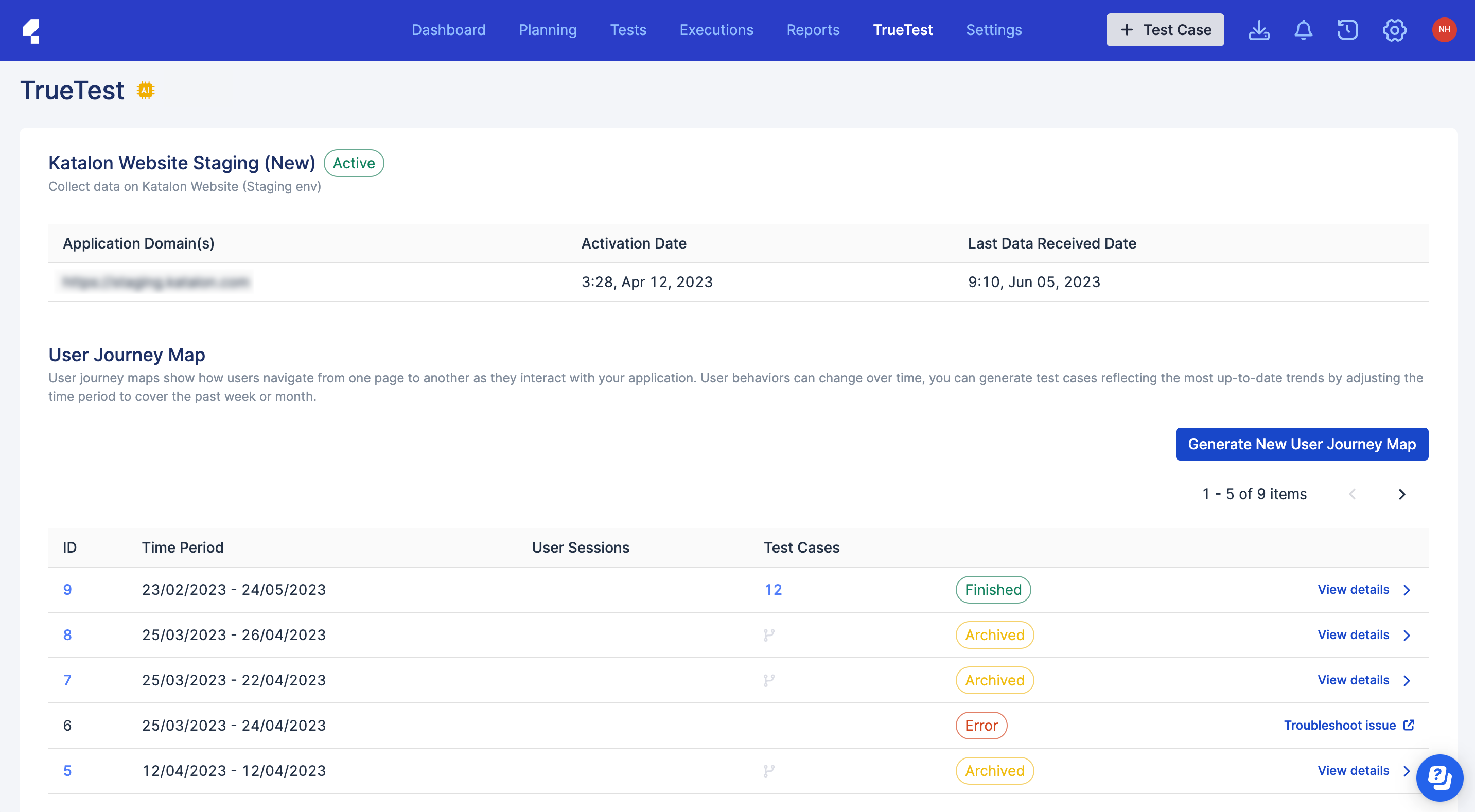
You can click the ID of a map or View details to access its detail page. The detail page includes user flows. See: View user journey map.
Generate new user journey map
You can generate a new user journey map with different time frame.
On the User Journeys page, click Generate New User Journey Map and select a time period, or customize your preferred time period.

The user account that triggers to generate a new map will receive a notification email when the generation is finished.
A user journey map contain several flows built from user interaction with the AUT. You can select the flows to generate test cases.
View user journey map
This document shows you the details of a user journey map generated by Katalon TrueTest.
From the map list on the User Journeys page, you can click the ID of a map or View details to access its detail page.

There are two sections: visualized map and flows.
View visualized maps
Select a flow to highlight it in the map.
Click and drag the pages to re-organize the map.
Switch on the Highlight traffic volume toggle to see the amount of user activity.
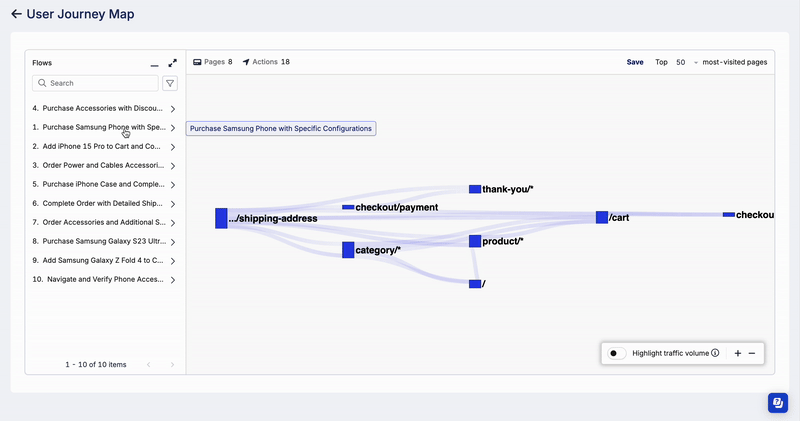
View flows
A flow represents an end-to-end path performed by a number of users on the AUT. For example, a common flow on e-commerce applications is: View a product > Add it to cart > View cart > Complete checkout.
A user journey map could have a number of different flows.
To quickly view the test steps of a flow, click the see more arrow.
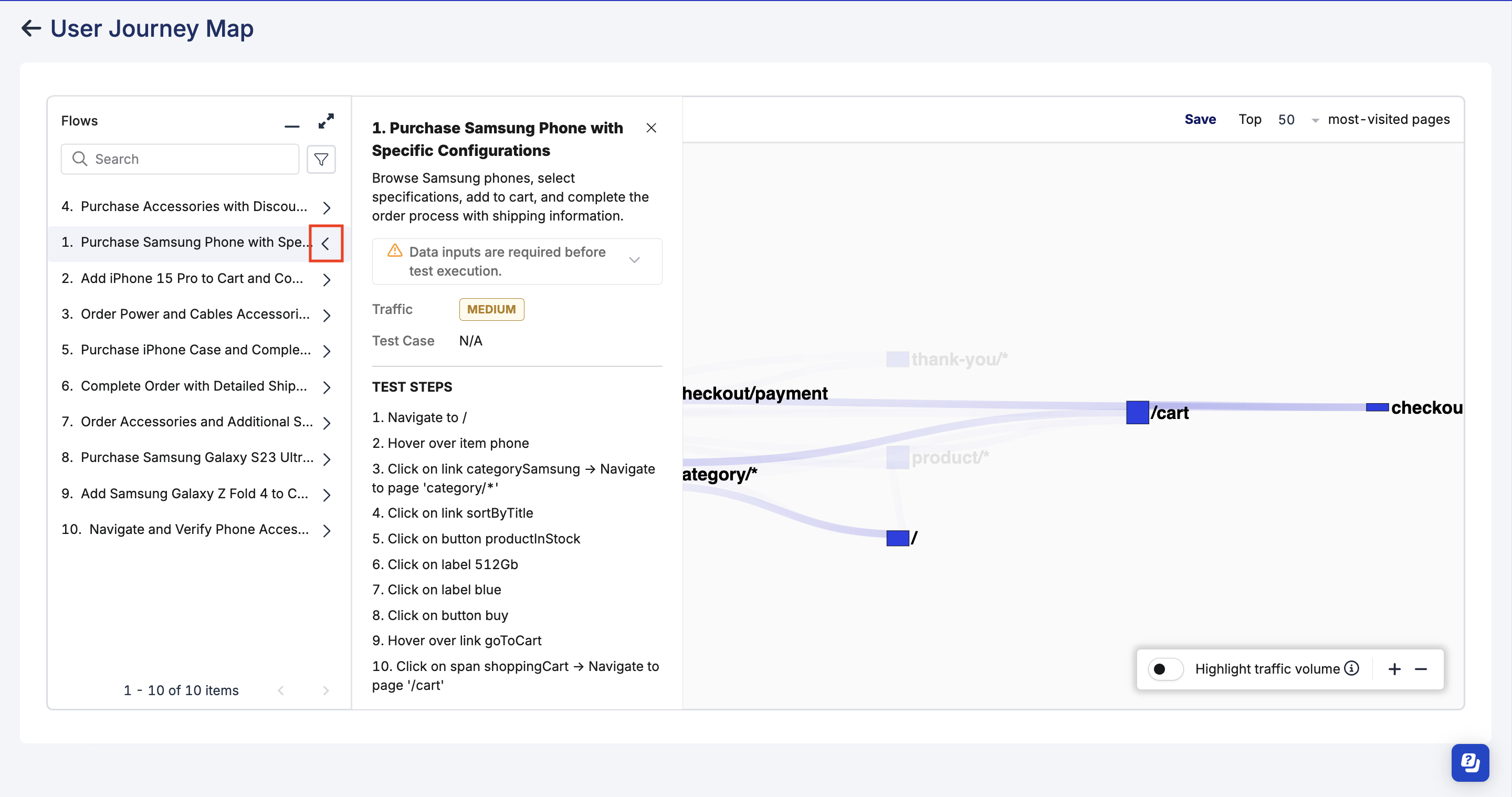
To view details of a flow, click the arrows to expand the Flows section.
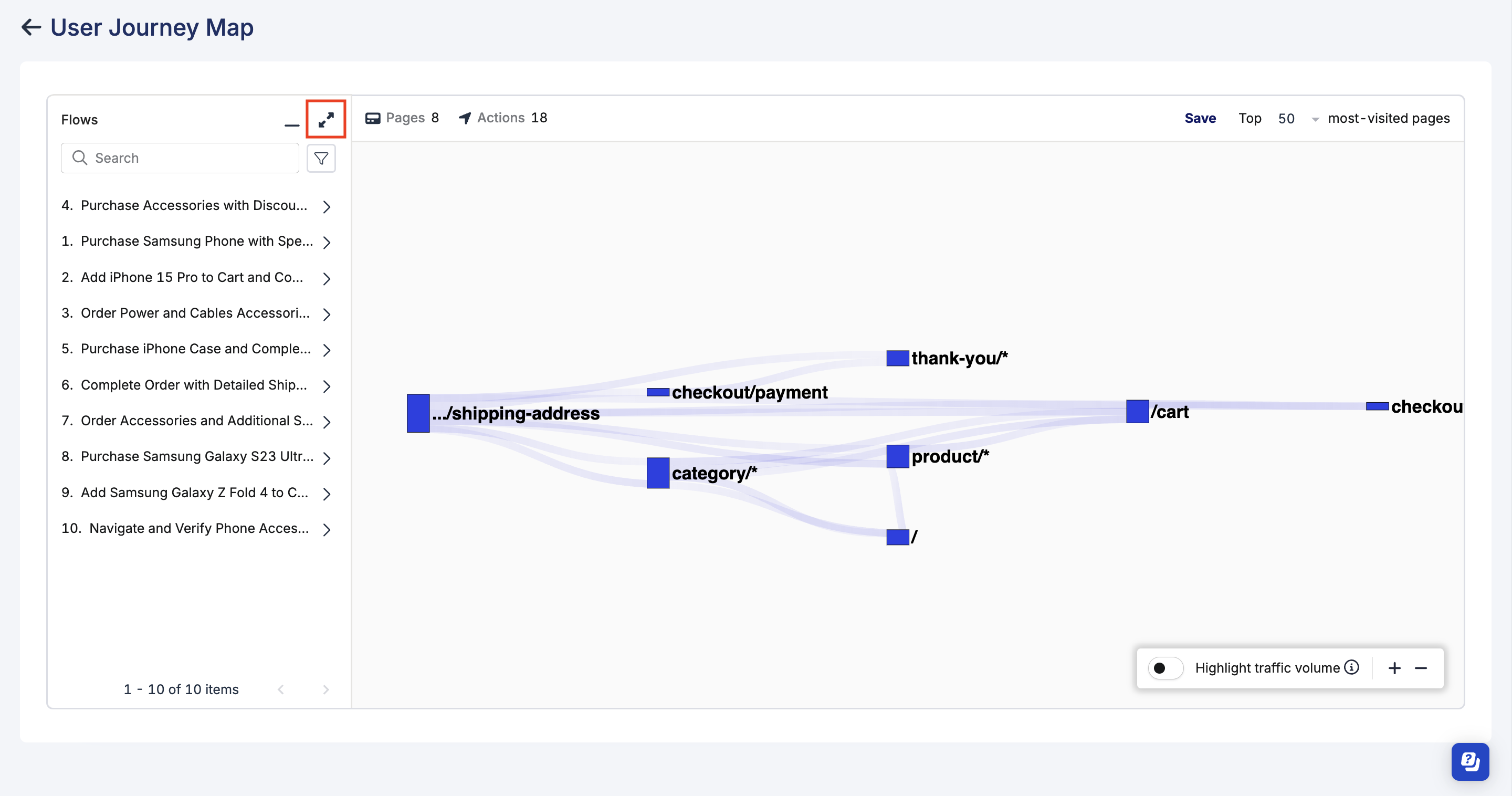
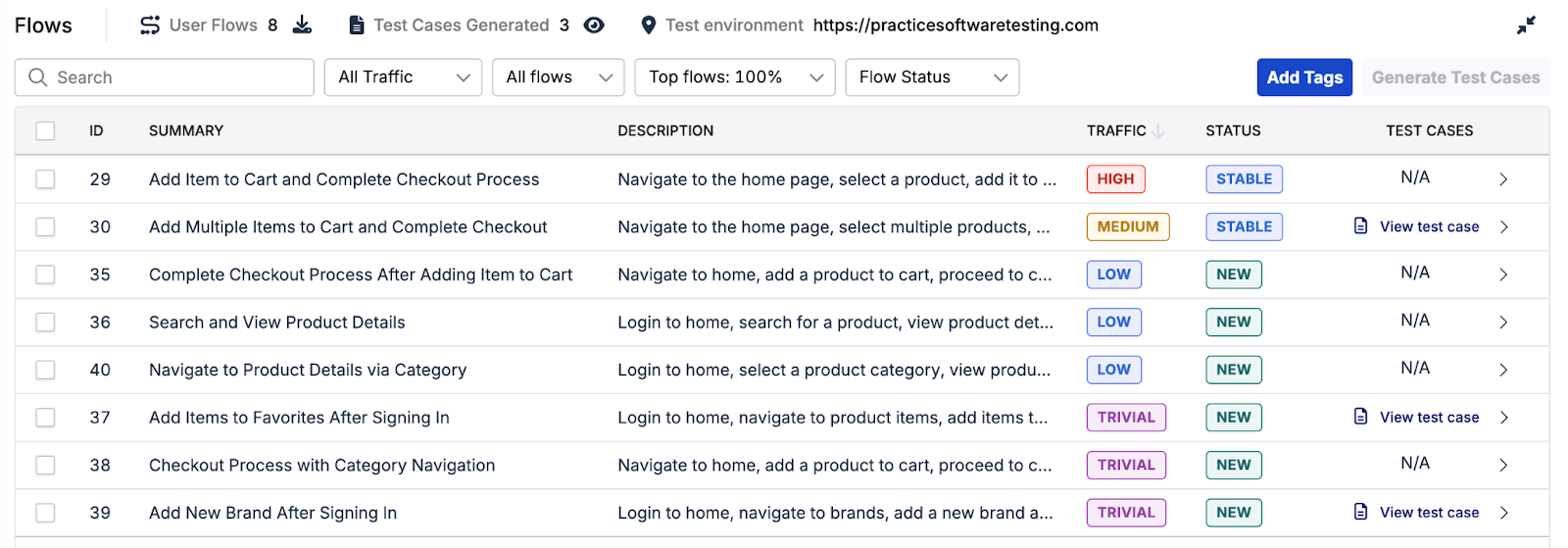
You can filter the flows by their traffic level, availability of test cases, and by flow popularity. You can also search the flows by their summary and description text.
The flow popularity filter allows you to focus on the most frequently used flows by narrowing down the list of flows to a specific percentage.
Traffic level indicates the relative volume of user sessions that go through a particular flow. There are four levels based on the percentage of the highest traffic volume observed (High, Medium, Low, and Trivial). For example, High level means there are about 75% of user sessions going through the flow.
- Stable Flows: Flows with no changes that present in both the new and previous maps. Test artifacts remain intact and you can skip reviewing these flows.
- New Flows: Flows that did not exist in the previous map and require review.
- Obsolete Flows: Flows that were present in previous maps but no longer exist. TrueTest archives all test cases related to obsolete flows.
Availability of test cases indicates whether the flows have generated test cases or not.
Click Export to export and download all user flows as CSV file.
Generate test cases
After TrueTest has identified the flows from user interaction, you can decided which flows are relevant to generate test cases. In the Flow section, select the desired flow and click Generate Test Cases. 
Once the test case generation has finished, you can revisit the flow and click View test case to view its details.
The generated test cases are stored in the registered script repository. Test case names are automatically generated based on the flow.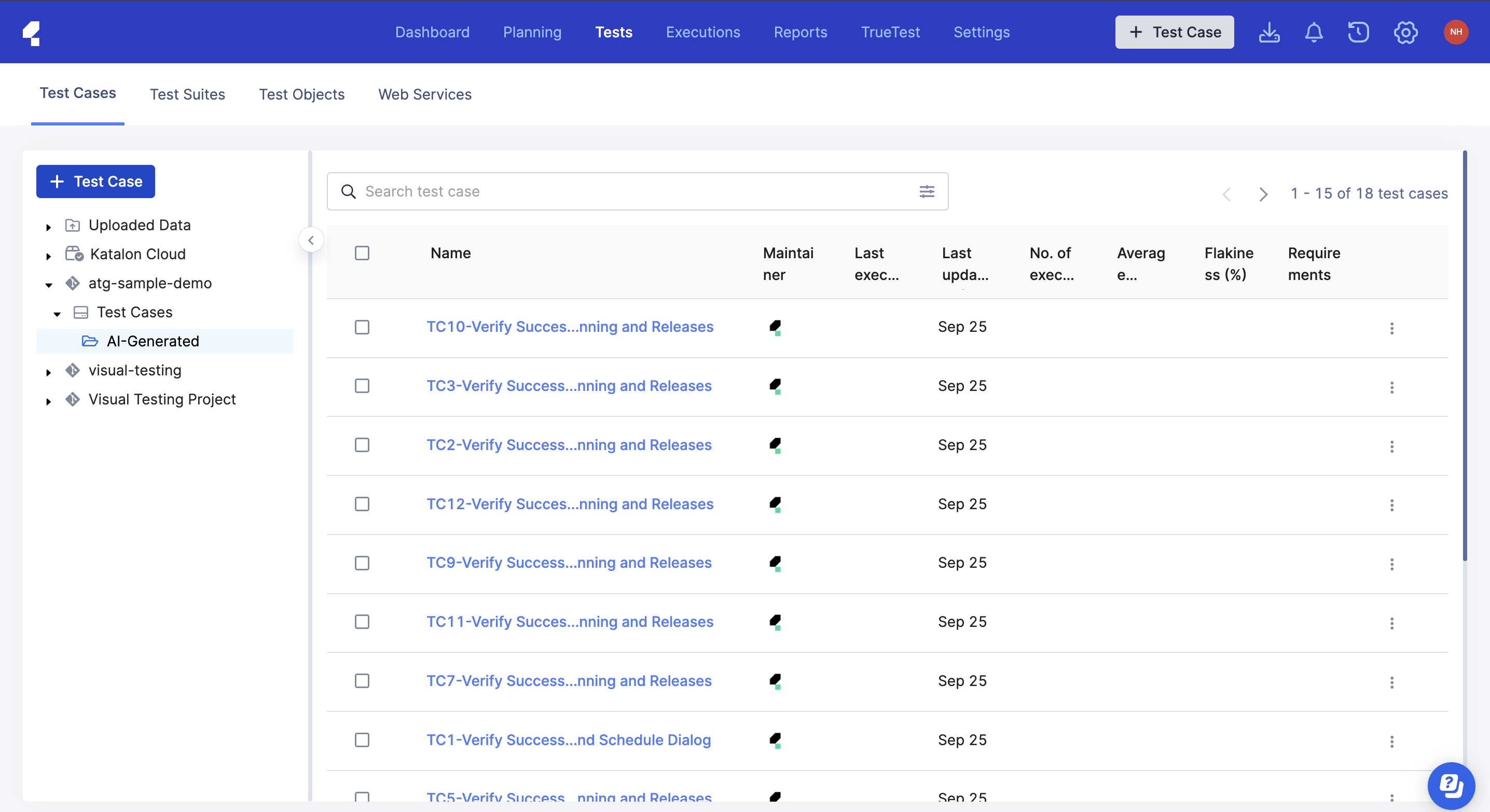
If you store test artifacts in Katalon Cloud and there is at least one test case generated, the download icon is shown and you can download the zipped file of the generated test case.